From CHAdeMO to CCS: Your guide to EV chargers
Learn how to match your electric or plug-in hybrid car to the right kind of EV charger and spend less time tied to the grid.
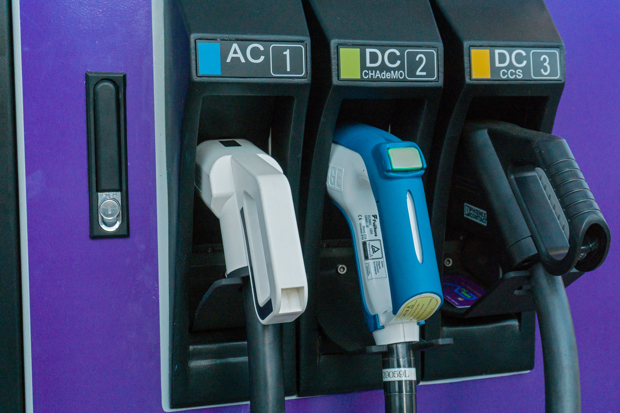
- Different EV chargers explained
- Know your CHAdeMO from your CCS
- Why charging speed matters
While electric cars have become relatively mainstream, charging remains one of the biggest concerns.
Different connections may mean finding the right services can be frustrating. While variable charging rates could mean the difference between a long layover or your car being fully charged before you've finished your drive-through coffee.
Types of electric car charger
There are essentially three types of connector you’ll find hiding behind the charger flaps of EVs and plug-in hybrids. These are generally divided by the country of origin.
Type 1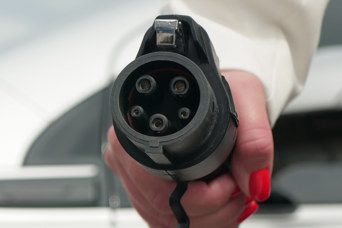
AC up to 7.4kW
Asia’s standard, found on the first Nissan Leaf, the Mitsubishi Outlander and on the Chevrolet Volt/Vauxhall Ampera is the five-pin Type 1 connector, which supports single phase AC charging up to 7.4kW rates.
Type 1 connectors are generally found on older EVs and frequently appear alongside the CHAdeMO connector.
Type 2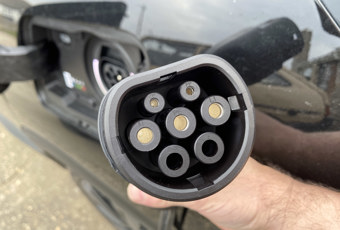
AC up to 43kW (fast AC)
Europe and America settled on a seven-pin connector which supports AC three-phase chargers up to 43kW, called Type 2 and commonly known as Mennekes.
It’s easily identified by the flattened top and is by far the most common type of charger you will find on public networks.
Owners of Type 1 vehicles can buy an adaptor and untethered chargers where you need to use your own lead will usually support either type, but naturally reduce the charging rate to support the vehicle.
Despite the high theoretical capacity of 43kW most European chargers and cars support 22kW maximum over Type 2, and domestic wall boxes 7.2kW with a dedicated 30A supply.
CHAdeMO
DC up to 62.5kW (400kW in Japan)
Japan’s pioneering EV network included early DC charging stations providing up to 62.5kW, using the CHAdeMO connector.
This secondary, fast charger solution bypasses the inefficient inverters needed to convert AC to DC for the battery, but did not become an international standard.
It was one of the first standards to support ‘vehicle to grid’. You will find CHAdeMO on early Nissan EVs and some imports, typically, but they need a dedicated charger.
CHAdeMO has evolved into the ChaoJi (CHAdeMO 3.0 standard) supporting 900kW rates and full compatibility with Type 2 CCS protocols via an adaptor. This is the standard now adopted in China.
As the first DC charging standard offered in the UK, CHAdeMO rapid chargers are relatively easy to find.
CCS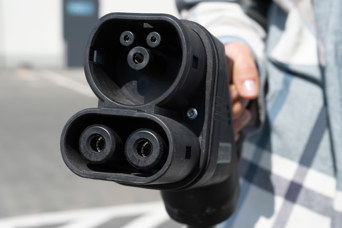
AC up to 43kW, DC up to 400kW
CCS (or Combo Charging System) can be found paired with either Type 1 or Type 2 connectors, known as CCS1 or CCS2 respectively.
In essence the CCS connector adds two large DC power couplings below the AC connector, either retaining or omitting the AC supply connections but retaining the control and safety pins.
CCS is found on vehicles that support DC charging and you can connect a CCS or non-CCS cable to them to charger. You cannot use a CCS plug in a non-CCS socket.
The DC - direct current - portion of the CCS connector can supply up to 1000 volts at 500 amps, with typical chargers delivering around 150kW rates, up to 400kW in fast chargers with dedicated supplies and 990W demonstrated in the latest technology.
Charger adaptors
For home charging, choosing an untethered wall box or charging point will let you use a cable that terminates in the correct Type 1 or Type 2 connector for your car. Many 7.4kW public chargers are untethered as well.
For rapid charging you can buy adaptors for Type 1 or 2 CCS from CHAdeMO cables but these are very expensive. As a rule it's best to get a high quality cable and when it comes to DC chargers, use what the vehicle was designed to use and don't mess with unapproved extra components.
Public charging networks and technology

- Motorway and charging hubs from Gridserve, InstaVolt and Tesla
- Public networks from BP, Osprey and independent providers
- Zap Map remains an essential tool for EV owners
Britain’s EV charging network is often regarded as insufficient for the number of vehicles that need to use it, but it is growing.
As well as motorway service stations and dedicated charging hubs, you will often find towns and cities have public charging spots in car parks, council offices, leisure centres and visitor attractions.
Many hotels and fast-food restaurants also offer electric charging points, as do supermarkets such as Tesco. You may need to sign up to a charger network such as BP Pulse to use these and many of them are limited to 7.4kW rates. You may only get a couple of miles during that weekly shop, but if you have a low-range older EV it’s a welcome top-up.
For consistent fast charging if your car supports it, look for Tesla Superchargers. The network is now open to other vehicles and generally offers plenty of charging points per location with fast charging rates for cars with CCS Type 2 connectors.
The website and application Zap-Map remains one of the best guides for available chargers near you, with privately-owned and public chargers tracked by users and network data, live charger availability and integrated payment for many networks.
Thanks to this network, some households have made their chargers available for public use which can prove invaluable if you're facing a range emergency.
Why don't you get the fastest charging rate at a public charger?

- Fast charging is 22kW - but rapid AC offers 43kW for supported cars
- Rapid chargers offer 50kW to 149kW
- Ultra-rapid chargers offer more than 150kW
The national grid can only provide so much power - both in terms of generation and in terms of the physical infrastructure.
A typical charging hub or group of chargers is powered by a substation that operates within an agreed capacity. This is one of the main barriers for new housing developers and industrial parks meeting the demand for EV infrastructure.
Currently there are more than 6500 locations offering rapid or ultra-rapid DC charging across 17,000 devices, most of which can handle two vehicles at once.
Gridserve, InstaVolt and other providers install ultra-rapid chargers that can deliver from 150kW to 400kW in theory, depending on the car's capability.
For supported cars that means being able to charge a 70kWh battery in around 15-20 minutes, or an entirely reasonable break at a motorway services.
If several cars with fast charging support are charging at the same time the amount of current available to each charger will be limited, in much the same way that home broadband services have a contention ratio that brings speed down during busy periods.
This will fluctuate over the course of a charge so don't abandon the session if it's only showing 60kW on a 150kW point. The rate may increase while you wait and it does not indicate a fault with the charger, cable or car.
You may be able to mitigate this by choosing a charger that is not paired with one already in use, but the physical layout may not dictate how the power is divided.
Your car's technology may also limit your charging rate. Many EVs and plug-in hybrids based around the CHAdeMO standard when designed only accept around 80kW maximum, as the components have been converted for a CCS connection, but not upgraded to permit the highest rate of charge available.
Electric car charging: the basics
Recharging an electric car is fundamentally a simple process no different to charging a smartphone or laptop, but on a much larger scale.
Where your phone battery might hold 0.01 kWh (or 10 Watt-hours), your car battery is designed to hold up to 100kWh - 100,000 phone batteries. In order to get enough power into that storage, electric cars have gone from a typical 140-160 volt architecture up to 800 volts.
Higher voltage allows lighter wiring for the same current and faster delivery of power for motors and charging, but it adds to the challenges faced by infrastructure.
800 volts is over four times the voltage offered by Britain’s domestic electricity supply. This means many chargers operate at lower rates and at home, you’d need to spend a lot of money to have such flexibility.
Most alternating current systems are limited to a maximum capacity of 32 amps on a domestic power supply of 230V - or 7.4kW, which increases to 11kW/22kW when connected to a commercial three-phase supply which pairs two domestic supplies to make around 415V available.
To get the higher charging rates demanded by modern high capacity batteries the majority of manufacturers use DC - direct current - charging.
Conversion to DC at the kind of levels demanded by an EV is expensive and places a high demand on the grid, so domestic DC charging really isn't feasible at the moment. Don't worry though - the kindest thing you can do for your EV is to charge it slowly and charge it to 80% capacity if that suits your journey.
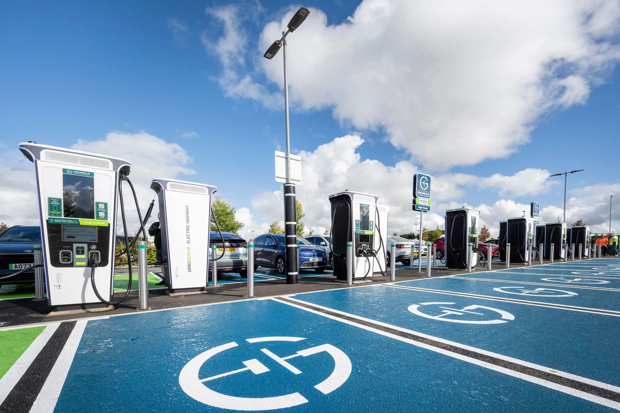
Is the standard 13A charger the best option?
Most electric cars come with a Type 1 or 2 cable. Some may also provide a 13A charger, with a three-pin plug on the end and a restricted charging rate.
This is usually referred to as a Mode 2 charging cable. The manufacturer provided charger is tested, safe and generally built to be used every day, for as long as the car might reasonably be expected to last. Which means that they are also the most cautious, slowest option.
If you need a replacement charger there are many third-party options at relatively low cost, some of which will exceed the 10A 'safe' sustained draw and push 13A limits for a 3kW charge.
These might be okay for a plug-in hybrid or small top-ups, but if you leave them plugged in for a sustained charge don't be surprised to find the mains cable is a touch warm. We wouldn't recommend relying on these at all, particularly if they claim to be Mode 1 cables.

An unusual option is the Juice Booster 2 cable, which is more of an adaptable, portable wall box. It can even be mounted outside, like a wall box.
It has adaptable cables that can be switched to use domestic and industrial power supplies including 16A campsite sockets and 32A three-phase supplies. It can provide up to 22kW charging if used as a Type 2 Mode 3 cable, with power smoothing and filtering claimed to improve charging rates.
It costs as much as a wall box, but for anyone camping or with access to three-phase power at work, it's a very versatile charging cable that isn't much bulkier than the standard 13A unit.
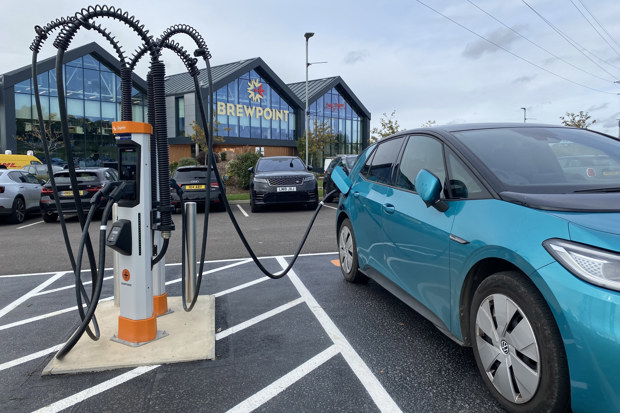
Wireless charging
Early electric cars such as the Chevrolet EV1, attempted clever solutions such as contactless magnetic paddles to charge the car.
Wireless charging pads have been developed and promoted as a solution by various firms. These generally require a large DC charging station and present many challenges, not least the inefficiency of using magnetic coils to transfer charge.
Compare the charge rate of your phone on a wireless charger vs USB plus the amount of heat generated and scale it up to a car or van. You'll see the first issue right away.
There are also environmental concerns and risk to wildlife which make wireless charging less appealing. However, wireless charging as a solution to on-street parking and EVs, keeps the concept under active development.
Solutions currently cost around £50,000 for a charging station, with several thousand more needed to convert the car with the induction plate and electrical interface.
AC vs DC charging
Electric cars are designed to use domestic electricity supplies and convert alternating current to direct current on-board to charge the battery.
A network of power converters, called inverters, provides the necessary change in levels and polarity to integrate charging, typical 12V accessory power, and the high-voltage traction battery.
Inverter type is often the limiting factor in the charging rate your car can handle, with higher-rate three-phase chargers for 11kW or 22kW often being an optional upgrade. These are built into the car - the charger you get in the boot is limited to around 2.7kW typically.
Cars with fast charging usually use a DC charging system to accept at least 50kW and offer the greatest benefit when using on public charging networks.
The type of charge is also dictated by the mode supported by the charger and cable.
Typically this would be Mode 2, which is domestic socket to car with monitoring and safety controls and potentially, shared electrical services up to 2.4kW demand or Mode 3, which is up to 22kW via a charging station and no shared electrical services on that circuit.
Mode 4 is reserved for DC fast charging at 22kW and above, and Mode 1 is a fallback without regulation - literally, plug a cable into the car. That is not approved for many systems.
